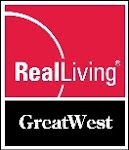If you drive the streets of Sacramento, buckle up and look out.
Motorists here are more likely to get in serious crashes - and more prone to be involved in drunken-driving crashes - than those in the state's other major cities, according to the California Office of Traffic Safety.
State data from 2005 to 2007 show the city of Sacramento's injury and fatal crash rate topped even that of Los Angeles and San Francisco.
More than 4,000 people in the city were injured in crashes in 2007, and 49 were killed.
Sacramento County is not quite as bad, ranking 13th among 58 counties in 2007.
Some Sacramentans say the city's poor ranking makes perfect sense: Drivers here are plain bad.
Many don't signal when turning. They blow stop signs. They talk on cell phones. One reported seeing another brushing his teeth while driving.
"I have driven in most states in this country, and Sacramento is by far among the worst I have seen," said Sacramento film producer Todd Gearou.
He's especially troubled by what he sees as a clash of cultures on the road, where slower drivers impede traffic and don't pull into slower lanes, and speedier drivers swerve angrily around them.
But traffic safety and public health officials say Sacramento's crash rates are about more than just driver ability.
"I don't think drivers are wildly different here than anywhere else," said Peter Jacobsen, a public health consultant who has studied Sacramento's crash patterns. Pointing a finger at drivers, he said, may even be a case of blaming the victim.
Sacramento's street designs, traffic patterns and traffic enforcement probably play a bigger role in crash rates, safety officials said.
One academic suggests the rate of serious injury crashes would drop if Sacramento had more congestion, like San Francisco or San Jose.
"The more attentive you have to be to drive, the better driver you tend to be," said Simon Washington, head of the Traffic Safety Center at the University of California, Berkeley.
The state's crash-rate numbers are based on surface- street crashes, not freeway incidents.
A Bee review shows those collisions are not random. Most happen on the city's largest and busiest thoroughfares. Hot spots include Truxel Road in Natomas, Broadway, Franklin Boulevard and Mack Road in south Sacramento, and commute streets downtown.
Outside the city limits, high-speed and heavily traveled Watt Avenue remains a major crash corridor.
Jacobsen said those more crash-prone streets have a lot in common: They are oversized and invite higher speeds, he contends, often with four or six lanes and long stretches between signal lights which allow drivers to pick up speed.
Unlike tighter street grids in San Francisco, much of Sacramento's street system was built when traffic planners favored funneling drivers onto a handful of major streets.
High-volume corridors lead drivers directly into the most dangerous urban site for drivers: large intersections.
Among city intersections, Stockton Boulevard and Fruitridge Road, and Mack Road and Valley Hi Drive had the most crashes, 57 each in 2008, according to police data.
City traffic engineers say they are trying to cut crashes with a new philosophy of building streets with fewer lanes and more room for pedestrians and cyclists.
In downtown Sacramento, that thinking has converted some older one-way streets to two-way, and slowing commute traffic by reducing lanes from three to two.
City traffic engineer Hector Barron said crews also are making subtle changes at dangerous intersections by adding protected left-turn pockets and installing larger, easier-to-see traffic lights.
They also have begun altering some signal lights so vehicles in all four directions have a red at the same time for a few seconds before one direction gets the green.
Sacramento's drunken-driving crash rate is perplexing, safety officials said.
Dr. Leon Owens, a Sacramento trauma physician who founded the anti-drunken-driving organization Every37.com says he doesn't believe Sacramento has more people with drug and alcohol problems.
He suggested it may be because Sacramento's boulevards allow inebriated drivers to go faster and make more costly mistakes.
Silas Miers of Mothers Against Drunk Driving said Sacramentans tend to drive their cars when they go out at night, rather than take transit or taxis, or walk. With many nightclubs and restaurants clustered downtown, he said, more Sacramentans may end up driving longer distances after drinking.
"It means somebody is going to take that chance," he said.
Safety officials say law enforcement is a factor as well in city street crash rates. Sacramento city police admit they deploy only 22 traffic enforcement officers. Fresno, a city of similar population, has 71.
"We'd love to have more," Sacramento police spokesman Norm Leong said.
The budget is so tight, he said, that those 22 do double duty, assigned to patrol neighborhoods where crimes are high, rather than streets where crash rates are high.
Sacramento police say they have been using state safety grants for more enforcement focused on reducing the alcohol-related crash rate. Leong said the police expect the rate to drop a bit.
Source Sac Bee



No comments:
Post a Comment